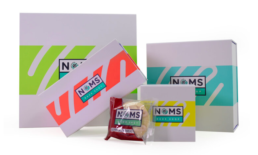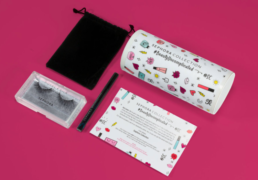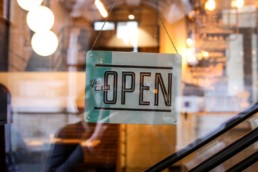Using Kits to Provide In-Person Experiences at Home
consumerexperience
With the changing behaviors going on in the world right now VBX Solutions knows education attractions are some of the hardest hit companies regarding the new norms created by the pandemic. How can you provide your customers with a personal experience your education attraction would normally offer in-person, from a distance?
VBX Solutions has been trying to find the perfect idea to help our clients make the most out of the situation and we have the solution. We have seen huge success with the education kits, and we are going to tell you why. When you think about what your attraction is really offering it’s not only the knowledge you have to share, it’s also the experience of being able to physically see, touch, and listen to something your customers are interested in. An education box can replicate that emotional bond customers would normally feel from visiting your establishments. People are so eager to get back to a pre coronavirus world and supplying them with an experience in a box is a great way to do just that.
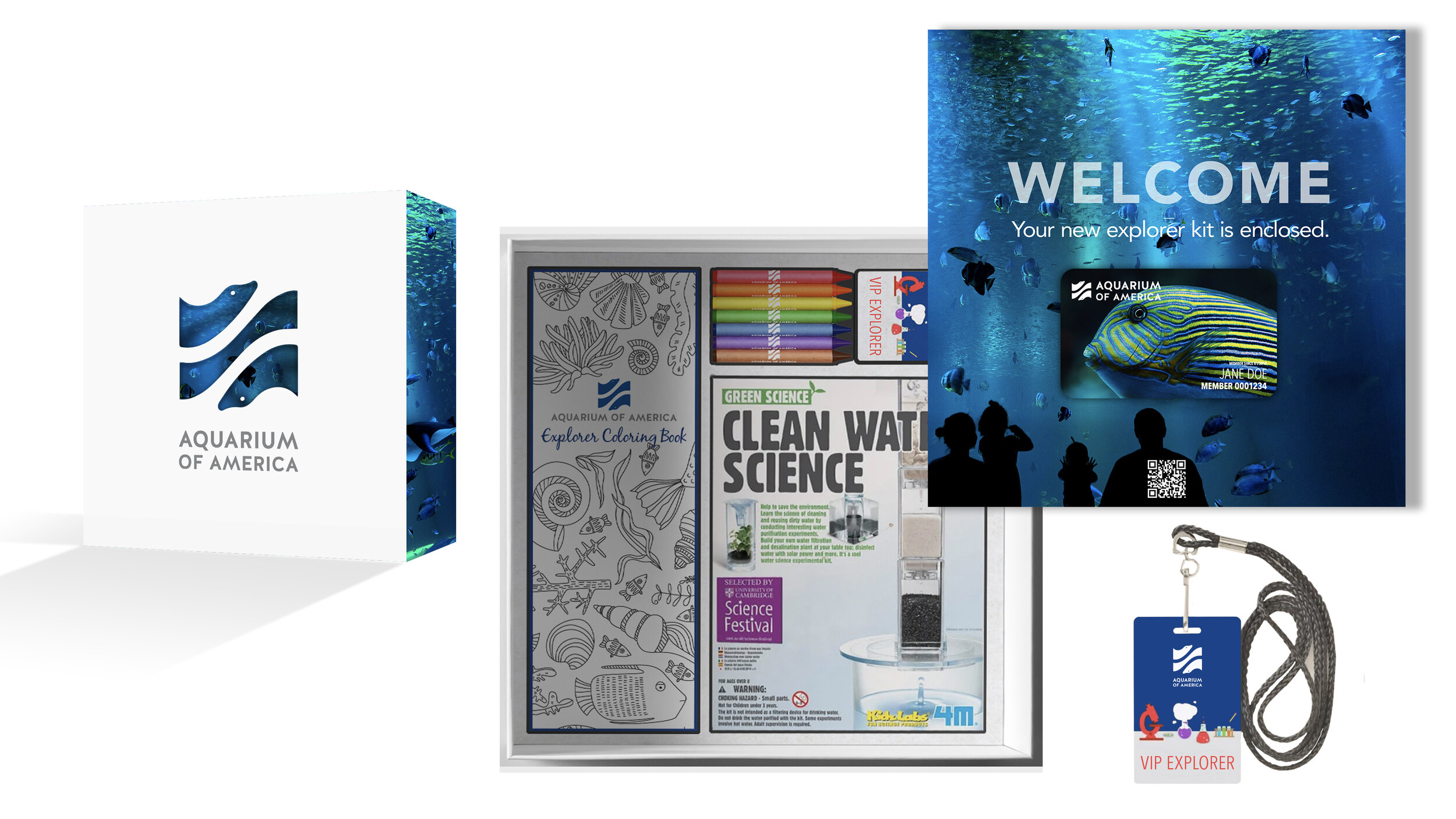
This sample education kit we created provides information this aquarium has to offer as well as fun ways to get engaged. Visiting an attraction provides customers with an experience as well memories with loved ones to last a lifetime so why not send that home to them.
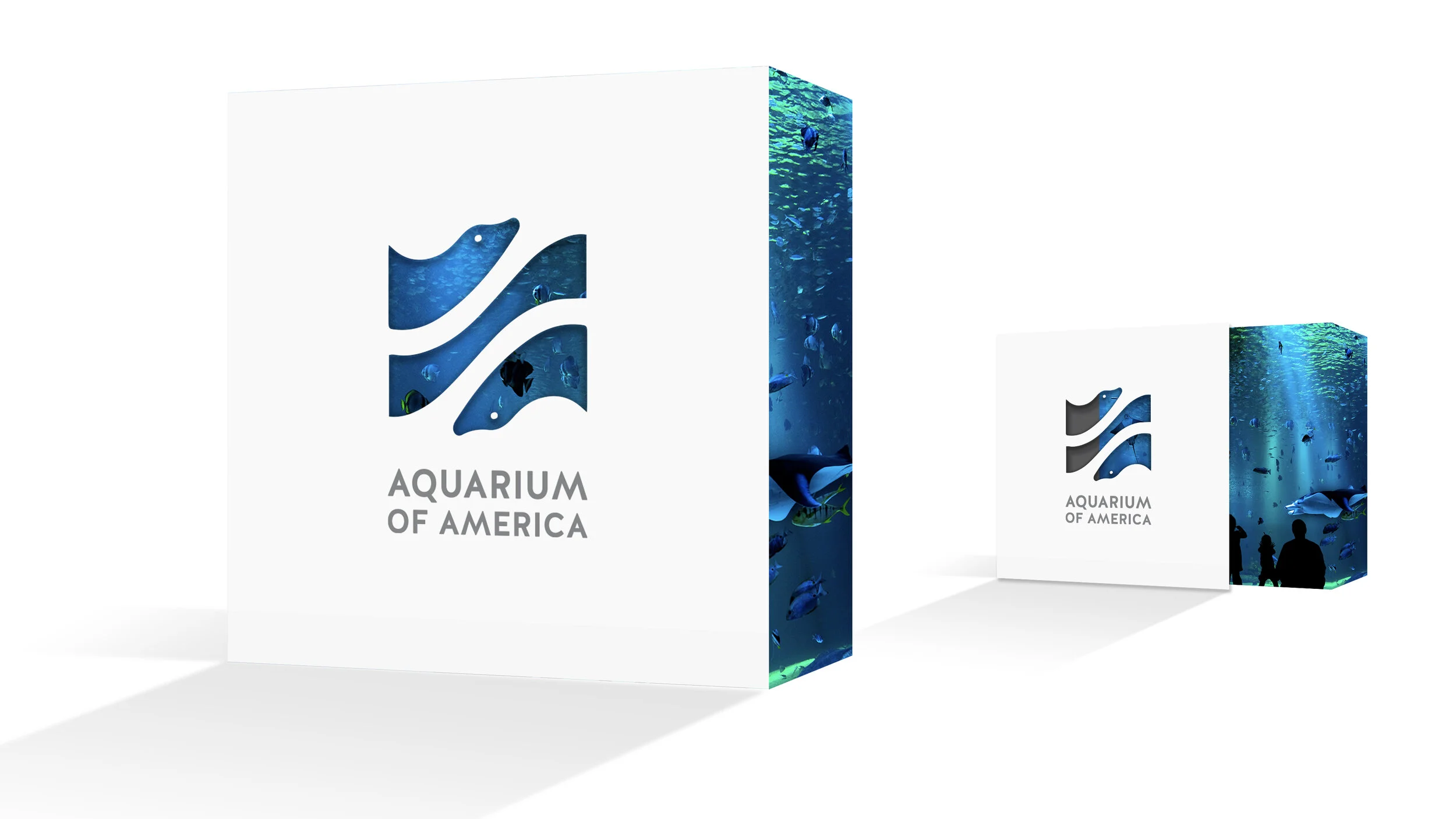
Booklet
· The kit comes with a booklet that provides mom and dad with information about all the perks of membership with the aquarium.
· It also provides them with fun and engaging activities for the whole family to get them involved with each other and your business.
o i.e. Take your kids to a nearby creek and see how many creatures they can name.
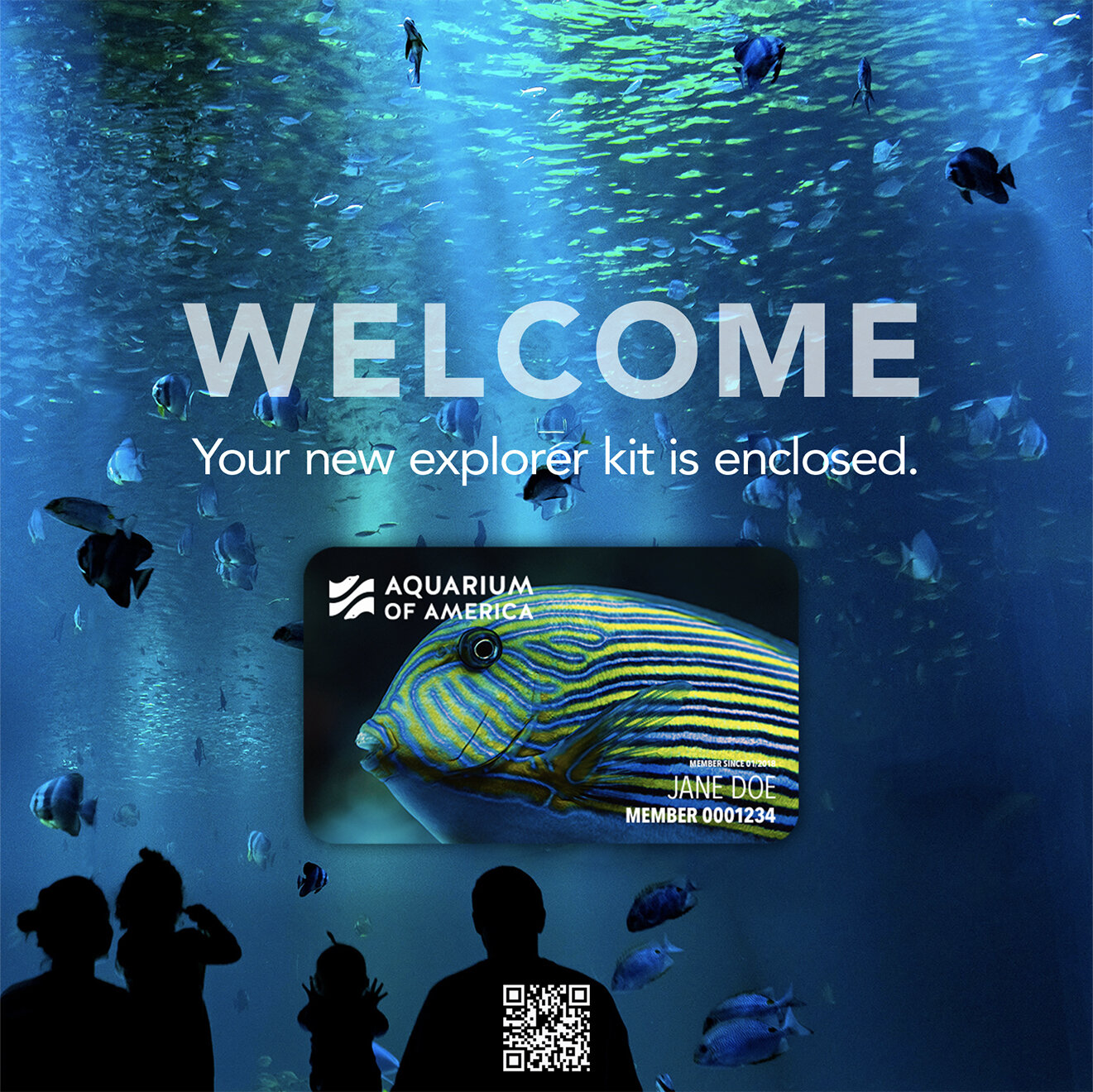
QR Code Attachment
· A QR Code is placed on the information booklet. This QR Code leads to more information about the animals in the aquarium and online games.

Explorer Coloring Book and VIP Pass
· The coloring book supplied has fun images of aquatic life and comes with a set of crayons.
· The package includes a fun “VIP Pass” to get kids eager about the opportunity to visit the aquarium when it is open.
Experiment
· This educational kit provides a clean water experiment for the whole family to do.
· Sending an experiment home to customers gives them an interactive piece of the aquarium as well as a way for the entire family to get involved and spend time together.
The entire VBX Solutions team plays a role in the lifecycle of getting kits like these prepared to go, but where the process really begins and ends is with our clients. Before we start designing any kit, we meet with the client to determine their goals, objectives, and KPIs.
From there, our Creative team gets to work on designing the package based off of what the clients goals are. From mood boards to sketches to prototypes, our team creates a multitude of concepts that support your brand’s promise.
Once the design is complete the manufacturing process begins and materials are collected from around the world to create the perfect package.
While the packaging is being manufactured our project managers start sourcing kit elements, identifying brands and content to include in the kit.
Finally, the packaging and content arrive at our fulfillment center where it is kitted and either stored in our warehouse awaiting drop shipment or is delivered to the client’s distribution center

With all the changes being made to the norms of society it is important for businesses to keep their target market engaged with what they have to offer. Providing clients with the experience of your establishment from the comfort and safety of their own home is a great way to show them you care about their loyalty. VBX Solutions would love to help you with taking that next step to go above and beyond with your customers. VBX Solutions can help you pinpoint ways to more effectively keep your target market interested in you and help navigate through any sore spots your business may be suffering from. Email us at info@vivaboxsolutions.com to discuss what we can do to help your education attraction flourish during these hard times.
Looking for a solution? We can help.
Headquarters
9211 Corporate Blvd Ste 110
Rockville MD 20850
Satellite Offices
Dallas, TX
Paris, France
San Francisco, CA
Scottsdale, AZ
info@vivaboxsolutions.com
Phone
800-529-1988
Minimum Order Quantities:
RPET Totes: 3,000
Kraft Shoppers: 5,000
Rigid Boxes: 3,000
Folding Cartons: 5,000
How to Promote a New Product to Customers
consumerexperience
One of the biggest challenges a brand faces when launching a new product is trying to figure out the best way to generate consumer interest. After all, most of us are loyal to certain brands and products, and it can be difficult to get people to try something new. This is especially true when the product being marketed has a lot of well-known competitors. How can a marketing team ensure that their brand’s product will be able to be seen- and hopefully purchased- by the right audience? Using custom packaging to help your product stand out against competing brands can help you attract your target market.
Of course, not all custom packaging is created equal. Certain factors affect the subconscious mind of the consumer when looking at packaged products, and can make a customer rank products as more or less attractive, based on the physical attributes of the packaging it comes in. A 2013 study (https://onlinelibrary.wiley.com/doi/abs/10.1002/mar.20651) revealed that attractive packaging triggered more intense brain activity, particularly in the areas of the brain associated with impulsivity when compared with neutral packaging. Additionally, both attractive and unattractive product packaging led to less activity in areas of the brain responsible for reflective thought than neutral packaging. This means that a customer tends to go with his or her gut reaction to a product, and the way it is packaged can make all the difference!
Using Custom Packaging to Promote Your Product
A product’s packaging can be far more important than you may think. Customers get their first impression of a product by looking at its packaging and can make snap decisions based on their initial reaction. For this reason, it is critical to ensure that your brand new product’s packaging stands up to the ultimate test of consumer preference. But how can you be sure that your product’s custom packaging generates the level of interest and excitement your brand needs to make people purchase the product? Here are some of the key psychological factors that make a consumer choose one brand’s product over another.
Color
Did you know that most people make subconscious judgments about a product within the first 90 seconds of seeing it? Not only that but the majority of consumers- nearly 85 percent!- base these first impressions on color alone. When it comes to custom packaging your new product, color is perhaps one of the most important factors to consider. Certain colors are believed to be more eye-catching than others, based on research. Using these colors- red, yellow, green, and pink- in your product’s packaging design may help to increase the likelihood of a customer looking at your product first. However, this doesn’t mean that every single product on the market should be packaged in one of these four colors; in fact, doing this would create an opposite effect on consumers, causing them to potentially pass your product up for blending in with all the rest. By ensuring that your product’s custom packaging is in a different color than any of the competitors in your market, you can create what is known as the “isolation effect” and capture your audience’s attention by being different from the rest. Bottom line: if your competitors all use pink in their packaging, use green. Dare to be different, and you may receive more positive attention because of it! It’s also important to consider the emotional connotation certain colors have with people. For example, blue and lavender are considered soothing colors, which is why they may be best suited for calming products, such as spa treatments or moisturizers. Meanwhile, products for the kitchen need to be associated with cleanliness, which is why white or silver are the most popular colors for the packaging of small appliances. By considering your product’s function, you can strike upon the appropriate color for your custom packaging.

Shape
Quick, what’s the shape of a Coca-Cola bottle? How about a can of Pringles potato chips? Sometimes, it’s the shape of product packaging that makes it stand out against the sea of competitors. While it isn’t often that a product’s custom packaging becomes more iconic than the product itself, like in the two above examples, thinking about how shape can affect a consumer’s choice can help you find the right direction for custom packaging your new product. While there is no such thing as one “right” shape for a product package, there are some things to keep in mind about psychology when you are trying to hit on just the right packaging design. For example, people tend to prefer curves to straight lines and, in fact, show a bias toward sharp, angular shapes in product packaging. This can be because of the way they perceive the product packaging will feel in their hands and naturally gravitate toward packages that are smoother and easier to hold. All of these consumer preferences are something you’ll want to strongly consider f you decide to literally think outside the box when it comes to custom packaging your product.
Texture
Product packaging that includes a distinctive texture can be beneficial in two distinct ways: not only can it help make your product easily identifiable even by touch, but it can also create a pleasing tactile experience for your customer that gives them a positive association with your brand and the product itself. Choosing a fun texture will encourage consumers to hold your product’s package for longer than they may have with an untextured package. This, of course, can lead to them purchasing the product, even if they didn’t intend to buy anything at all! Smooth matte and high-gloss surfaces can be used to make custom packaging pleasing to the touch, as can soft, fluffy textures. Using texture in your product packaging can also help convey a certain air of elegance or prestige about your brand, causing customers to look upon it as a luxury item. Some brands that market high-end products rely on texture to connote an upscale, sophisticated feeling and make customers feel elegant for choosing them. Depending on the nature of your brand and product, you can make an appropriate choice for a custom packaging texture that makes customers want to hold it forever!
It’s easy to overlook the print on a product’s custom packaging, especially when you are already thinking about its color, shape, and texture! However, typography can make a huge difference in the success of a product. Since customers who are unfamiliar with your new product will be inspecting the package for information about it, they will be sure to make a stronger connection with packaging that contains a font that resonates with them. It goes without saying that easy-to-read text will help your customers better understand the attributes of your product in a shorter time, but there is something to be said for an ornate script if that font better exemplifies the nature of your brand. Once again, choosing the typography that will accompany your other custom packaging choices is more about understanding the mission and story of your brand: try to choose a font that is short-hand for your brand identity and how you want to be perceived by your audience. For example, products that are more whimsical in nature, such as children’s toys, are best served by a playful, handwritten-looking font, whereas a luxury brand might opt for a serif print font to add a certain old-school weight to the packaging.
By understanding how you want your product to be perceived by the public, as well as knowing your target audience, you will be able to hit upon a winning packaging design that can get you noticed by the right people. Be sure to refer to these four key factors and see how your custom packaging design stacks up!
Looking for a solution? We can help.
Headquarters
9211 Corporate Blvd Ste 110
Rockville MD 20850
Satellite Offices
Dallas, TX
Paris, France
San Francisco, CA
Scottsdale, AZ
info@vivaboxsolutions.com
Phone
800-529-1988
Minimum Order Quantities:
RPET Totes: 3,000
Kraft Shoppers: 5,000
Rigid Boxes: 3,000
Folding Cartons: 5,000
Using Custom Promotional Boxes in a Marketing Campaign
consumerexperience
In order to understand the challenges faced by the average promotional marketing team, it’s necessary to get inside their heads a bit. What’s the biggest obstacle they need to overcome in order to get consumers to use their product or service? How can they effectively introduce their brand to their core audience in a way that informs, entertains, and educates? When it comes to marketing, custom promotional boxed are one of the best ways to meet these objectives and build a strong brand identity while providing the information their target market needs about the product they are offering. Here are some basic strategies for custom-packaging promotional boxes in a way that will get the right people to pay attention to your brand.

Unboxing Match
If you’ve been paying attention on social media lately, you’ve likely spotted a trend that’s showing no signs of going anywhere. From YouTube to Instagram, unboxing videos are a widespread phenomenon that can provide maximum exposure and recognition for your brand at absolutely no cost! An unboxing video is just what it sounds like: a video of a person unpacking a new product so that other fans of the product or brand can see its contents. While an unboxing video can be made for just about any product on the market, it is most common to see an electronic device, such as an iPhone, or a collectible toy, such as a limited-edition LEGO set, get unboxed for others’ viewing pleasure. The unprecedented rise of the unboxing video has made many companies pay closer attention to how their items are packaged, and strive to make every unboxing experience as aesthetically-pleasing and satisfying as possible.
Since a custom promotional box’s primary function is to introduce consumers to a new product or service, or even to the brand itself, it makes sense that, if a promotional box was packaged interestingly enough to generate excitement and intrigue, unboxing videos would be made and shared over social media outlets by excited members of your target audience. This exposure could potentially lead to the brand and product being blogged about and reported on by industry heavyweights and consumer reviewers alike. All of this publicity can be very good for an as-yet-unknown startup company or new product that has not gained significant traction among its core audience. By amping up the excitement with custom packaging, your promotional box stands a better chance of becoming the subject of positive buzz.
Identity Check
When you think of the phrase “brand identity,” chances are you think of that handful of mega-corporations who have created entire mini-societies based on consumer devotion to a product. A solid brand identity is a quick and efficient way to summarize your company’s mission, values, and process while also building an emotional bond with any consumer who shares those sentiments. Before you plan your packaging strategy for a custom promotional box, it is vital to give serious thought to just how you want your target audience to feel about your company and its products based on this first experience.
Are you a quirky, irreverent anti-corporation that wants to do some good in the world? Are you a serious-minded company that business professionals have relied on for over five decades? Perhaps you are an industry disruptor poised to change the face of our modern world forever. Whatever your brand, the first step of your marketing campaign should be to define its identity and then use that information to design your custom packaging concept for promotional boxes.
Make It Stick
People receive things in the mail all the time- and most of it gets tossed in the trash or recycling bin! It’s sad but true that a substantial number of promotional marketing materials never even get opened by their intended recipients. What if you could guarantee that your company’s custom promotional box would be the one they open? With creative custom packaging, you can! People enjoy being entertained and pleasantly surprised, and they want to feel as though a specific brand message resonates with them. In our modern world, we receive so much input that it all starts to sound like white noise after a while. By custom-creating a standout promotional box, you can ensure that your target market will tune in for a moment and receive your brand’s message loud and clear. With a creative approach to packaging, your promotional box will be the one that sticks with your audience long after they’ve opened it.
Take it Easy
Just because your custom promotional box’s packaging is innovative and eye-catching, that doesn’t have to mean it’s hard to open! Think of the end recipients and the experience you want them to have, so you can customize your promotional box in a way that eliminates difficulty and frustration. All too often, marketing departments choose form over function, which can lead to costly product packaging blunders. Imagine how a consumer will feel about your brand if he or she can’t easily and quickly open the promotional box’s packaging? It’s best to make sure that however you choose to capture your brand values through packaging, it will not require an advanced engineering degree to actually open it!
Label Yourself
You want to make sure that your custom promotional box not only ends up in the right hands, but is then opened and reviewed by those who need to hear your message most. There’s no way you’re going to achieve your end goal of imprinting your brand logo onto the brains of everyone who encounters your promo kit if you don’t first imprint it on the packaging itself. Highly-visible, brand-specific labeling that uses both the company name and logo will go a long way toward helping people remember you. A delightfully-packaged little promotional box that sparks imagination and generates buzz is great, unless nobody can even figure out who put the box out in the first place! By making sure your brand name is front and center, you can be sure that people will be able to identify your company before they ever open the package.
When you are custom-designing the packaging for your promotional boxes, be mindful of the end result your organization is shooting for, and you’re sure to land on just the right strategy! When in doubt, make sure to refer to these helpful hints and your promotional materials will stand head and shoulders above the rest of the competition.
Looking for a solution? We can help.
Headquarters
9211 Corporate Blvd Ste 110
Rockville MD 20850
Satellite Offices
Dallas, TX
Paris, France
San Francisco, CA
Scottsdale, AZ
info@vivaboxsolutions.com
Phone
800-529-1988
Minimum Order Quantities:
RPET Totes: 3,000
Kraft Shoppers: 5,000
Rigid Boxes: 3,000
Folding Cartons: 5,000
Using Customer Loyalty Programs in Retail
consumerexperience
With the rise of big-box stores, online shopping giants, and same-day deliveries, the retail landscape has changed dramatically in a relatively short period of time. Consumers now have the freedom and flexibility to shop for virtually anything, any time of day, and enjoy affordable pricing, free shipping, and other perks that were once unheard of in the retail world. Because of this, the competition between retailers has never been more fierce. It is getting increasingly difficult to build and retain consumer loyalty with so many options available to shoppers nowadays. This seismic shift in how people purchase necessities and luxury items has caused a struggle among retailers to keep up with changing trends, as well as a constant search for a magic formula to stand out against competitors.

One of the most popular ways retailers maintain a healthy, thriving customer base is through loyalty programs. Many larger retailers offer customer loyalty programs that offer discounts and rewards earned through purchases. This strategy is effective not only by giving consumers an added incentive to do their business with a particular store, but also by ensuring that customers are likely to spend even more money when they return to use their reward points or earned discounts.
What Makes a Customer Loyalty Program Successful?
In order for a retail customer loyalty program to gain success among its target audience, it should meet the following requirements:
No Cost to Join
If a customer loyalty program is free, customers are far more likely to sign up than if there were a monthly or annual membership fee. While some retailers do offer rewards programs that cost money to subscribe, the free loyalty programs are almost universally more successful and popular than the ones that charge.
Keep in mind, however, that in order for a retailer to support a free rewards program, they must be able to cover the costs of the goods or services that are being given away or reduced in price. A prime example of this is the Starbucks rewards program, which is free to join and incredibly popular among its customers. Recently, customers could receive any menu item for free each time they earned 125 stars, at the rate of one star for each dollar spent in the store. Additionally, certain promotional events allowed customers to earn double or even triple stars on special days or at off-peak, “happy hour” times of the day. However, Starbucks recently had to change its reward redemption structure, as it became clear that customers were using their earned rewards stars toward big-ticket items, such as salads and sandwiches, rather than much-cheaper cups of coffee. The rewards program now operates on a tier system, but this has not seemed to hinder the success of the program.
User-Friendly
From the basic structure of the customer loyalty program to the ease and convenience with which points can be redeemed online, user experience is everything. When rolling out a new customer loyalty program, a retailer must make sure that both the desktop and mobile website or app supporting the earning and redemption of points is intuitive, convenient, and simple to use. Additionally, the structure of the program should be easy to understand and clearly laid out to avoid confusion and frustration among customers.
Not surprisingly, the Amazon Rewards Visa is one of the most user-friendly customer loyalty programs in existence. A digital native, Amazon has always led the pack when it comes to innovating online retail systems, and its rewards program is no exception. Though becoming a Rewards Visa member does require signing up and being approved for an Amazon credit card, after that, the reward points are as easy to redeem as they are to earn – both on and off the Amazon website. Even more importantly, members are able to access their point balance and view past transactions, earned reward points, and more on the website or mobile app, making it convenient, easy, and, as Amazon itself would say, “frustration-free.”
Great Incentives
As consumers everywhere can probably tell you, not all customer loyalty programs are created equal. Some retailers, for example, offer things like “store cash,” which can be redeemed only during select weeks and take a percentage off of a future purchase, rather than giving a customer anything for free. A good rewards program should offer a healthy balance of same-day discounts and the ability to redeem points toward free items. Some of our favorite incentives give the consumer a choice of special addition kits which make them feel rewarded while also introducing them to new products.
However, the ease with which customers can receive rewards is just as important as the incentives themselves. A number of customer loyalty programs tend to make people spend far too much before parting with even the smallest incentive on the tier. Movie theater rewards programs are a notorious offender, forcing rewards members to spend literal hundreds of dollars on ticket and concession purchases before even being granted a free small popcorn valued at five dollars!
No Expiration Date
A reward earned should be a reward kept. However, some retailers have structured their customer loyalty programs to include expiration dates for discounts and free items, even though a consumer has earned the points fair and square. The expiration date strategy is a purposeful one, designed to make customers come back sooner. However, it can be a major turnoff to earn enough points for a large reward, only to be told by a sales associate that those points expired one week ago! By structuring a customer loyalty program with no expiration dates, you are showing customers that you value them as people, not dollar signs.
Chick-Fil-A does a very nice job of handling the balance between when points are earned and when they are redeemed. Their loyalty program allows customers to spend their accumulated points either little by little or in one lump sum. A customer can use the Chick-Fil-A mobile app to easily keep track of how many points they have earned, as well as which free reward items are available to them. Once a customer redeems a reward, it becomes a coupon that is only available for 24 hours, but since most customers wait to redeem their reward points until they are already at the restaurant, this system does not cause confusion or frustration for anyone involved.
By keeping your customer loyalty program simple, free, and easy to use, you will be able to provide incentives that entice consumers to keep coming back to your retail store over and over again. Follow these guidelines when structuring your customer loyalty program and you will have a devoted customer base in no time. How can Vivabox help you create a successful loyalty program? Contact us to find out.
Looking for a solution? We can help.
Headquarters
9211 Corporate Blvd Ste 110
Rockville MD 20850
Satellite Offices
Dallas, TX
Paris, France
San Francisco, CA
Scottsdale, AZ
info@vivaboxsolutions.com
Phone
800-529-1988
Minimum Order Quantities:
RPET Totes: 3,000
Kraft Shoppers: 5,000
Rigid Boxes: 3,000
Folding Cartons: 5,000
O2O: Bridging the Gap for the Online-to-Offline Consumer Experience
consumerexperience
As e-commerce becomes more prevalent year-over-year, online and brick & mortar stores (and even DTCs) are scrambling for consumer attention. At the same time, demands for extraordinary experiences grow from both a digital and a physical retail point of view, but from the consumer perspective and certainly from the brand perspective, there is a struggle between the two worlds when it comes to how they work together.
Enter O2O: Online-to-Offline commerce.
O2O is a business strategy designed to bring online customers to brick & mortar locations, as well as create a seamless digital experience before, during, and after their purchases.
Many factors conspired together to create the need for an O2O strategy, but the most important one is that consumers see desktop-mobile-physical shopping and buying as fluid while many companies and brands distinguish them, set attribution targets for each, train and incentivize employees in silos, and make it hard to share data between digital and physical interactions.
The positive spin and the core of O2O strategy? More touchpoints and more opportunities.
Gone are the days of warehouse shelving and big brown boxes stuffed with peanuts and bubble wrap–consumers are driving expectations higher while asking for eco alternatives and at-my-fingertips convenience all at the same time and from every step of the buyer journey.
According to a December 2018 Shopify article, “Every brand wants to capture its market in totality, to reach customers new and old through mediums on-site and off. Today if your company doesn’t have a multi-channel marketing strategy…good luck keeping up.”
This means providing online, brick & mortar, catalog, mobile, and social options in unison. The article also explains that, on average, multi-channel marketing and selling increases revenue by 38%, 120%, 190% with each additional channel respectively.
This kind of growth is considerable and needed in today’s retail climate. However, one area that still gets left unnoticed is how one bridges the online/on-site gap.
Typically, businesses offer consumers choices: they can buy online and have it delivered, or they can go to a store and make a purchase. But what about those who research online and then go to the store to make their purchase? What happens when they order a product and want to pick it up in-store? More so, how do businesses convince consumers to buy online and pick up in store to not only create a more well-rounded shopping experience but to also create their own unique experience and brand-in-hand experience? What is the incentive for consumers to do both?
The answer lies in the conversation that already surrounds O2O. The known benefits of O2O commerce allow businesses to treat online and offline channels as complementary rather than competitive.
- Rapid in-Store pickup of products purchased online
- Online purchase of products while at a physical store (quantity, size, color variations and more vs a lost sale)
- Physical store returns & exchanges for online purchases
- Additional incentives and well-rounded shopping experiences when customers combine online and offline purchases
- A combination of online tracking to offer personalized shopping experiences while consumers are actively shopping
- New opportunities for trial and loyalty program engagement.
Research shows that many customers still want to have shopping experiences that allow them to have tangible interactions with the products they want to buy, but they don’t want to give up their technology.
In a recent study by CBRE Group, discovered that even younger people prefer an in-store, tangible shopping experience. The survey showed that 70% of millennials prefer shopping in stores, even though they spend an average of 7.5 hours a day online. This is one of the top reasons some 22+ beloved “DTC Only” brands have all opened physical spaces beyond temporary pop-ups (including Bonobos, Glossier, Aday, Everlane…and more)
However, despite the need for online and on-site stores to be interchangeable, there is still work to be done, but we are seeing considerable progress with how the two are working together in more efficient, collaborative ways. Nordstrom, Warby Parker, and Allbirds are all examples of companies who have their finger on the pulse of O2O strategy, and they see returns on investment for their efforts. We believe this competitive advantage will only increase over time.
The bottom line is that the buzz around O2O is getting louder, which means e-commerce, retail, packaging, marketing strategies, and on-site touchpoints are essential to address holistically–they can no longer be separated or standalone.
To learn more about how Vivabox can help connect your offline and online experiences using trial & loyalty kits, white label customer care, and more reach out any time! info@vivaboxsolutions.com
Looking for a solution? We can help.
Headquarters
9211 Corporate Blvd Ste 110
Rockville MD 20850
Satellite Offices
Dallas, TX
Paris, France
San Francisco, CA
Scottsdale, AZ
info@vivaboxsolutions.com
Phone
800-529-1988
Minimum Order Quantities:
RPET Totes: 3,000
Kraft Shoppers: 5,000
Rigid Boxes: 3,000
Folding Cartons: 5,000
It’s Not Medieval; It’s a Renaissance: Why Retail Isn’t Dead
consumerexperience
We hear it quite a bit these days: online shopping is killing brick and mortar retail. It’s only a matter of time before it runs traditional stores out of business. Malls are drying up, stores we all grew up with are going out of business, and comparison shopping with the swipe of a finger on a digital screen has customers leaving stores without a purchase because they can buy it online, or somewhere else, for less.
As of the last quarter of 2018, e-commerce sales account for just 9.9% of overall retail sales in the US. That means 90.1% of all purchases are still being made in physical stores. The increase in online sales is growing, which creates a digital disruption of brick-and-mortar, but retail is far from dead and buried. To remain competitive in today’s mobile-fueled marketplace, retailers need to pay closer attention to market demand and conform their stores to changing consumer habits. Better yet, set a new standard for shopping and buying.
Despite the gloomy forecasts of retail, consumers still enjoy the instant gratification that comes from buying products in person instead of waiting for delivery (even if it’s only a day or a few hours). They enjoy the experience of shopping–not necessarily the simple act of purchasing. Those are two different emotions and should be catered to separately. They love a clever, or attractive, package that they can hold and inspect which might offer a spark of wonder and intrigue — all before they buy. They love a curated box that speaks to their inner “foodie” or “self-care” opportunity.
They want to explore new products and brands to break out of the same-old experiences they are used to. They want products (and services) that make them feel catered to and special. Even those on tight budgets love a little luxury that comes with experiential, adventurous shopping. They want beautiful environments with lovely smells, soft items to “pet,” and products with a wow factor (for themselves and others).
Moreover, the products consumers buy from retail stores are not just items they may need or want, but these items are also like souvenirs they bring home from the stores they frequent. I have been in eye-catching stores with beautiful set-ups and soft lighting, and I found myself wanting to buy something, even if it is a small item because I wanted to take a piece of that experience home with me.
As long as retailers are differentiating themselves on unique products and more remarkable shopping experiences (including exceptional customer service, BOPIS services, vibrant environments, and corresponding digital channels that pair well with their stores), it is easy to recognize that physical retail isn’t dead at all. The atmosphere is quite robust for stores that listen to consumer demands and think like consumers, not like legacy retailers.
Stop into Hudson Yards in NYC for a view into experimental retail spaces — touchable art, IG-friendly stores (Atelier Cologne), food halls and unique food stops (David Chang’s Fuku), landmark experiences (The Vessel), boutique coffee (Blue Bottle), stores that offer self- or assisted-checkout (Stance, Dirty Lemon), alongside a family-friendly sweets-and-games experience from Snark Park — all as ways to bring stickiness (borrowing from digital here) to an environment. And it’s working. Try not to feel wowed when you walk in.
Apocalyptic retail forecasts are only accurate for companies that continue down the “one-size-fits-all” branding and dull store experiences where products are stacked on shelves to get lost in the clutter. There is significant opportunity to take advantage of the 50% year-over-year growth that still exists in physical retail–it just has to be different than what has been done in the past.
Learn more about how Vivabox can curate exploratory, experiential packaging for your products to meet current consumer demands and offer your company better options and fresh SKUs for growth in the changing retail landscape.
Looking for a solution? We can help.
Headquarters
9211 Corporate Blvd Ste 110
Rockville MD 20850
Satellite Offices
Dallas, TX
Paris, France
San Francisco, CA
Scottsdale, AZ
info@vivaboxsolutions.com
Phone
800-529-1988
Minimum Order Quantities:
RPET Totes: 3,000
Kraft Shoppers: 5,000
Rigid Boxes: 3,000
Folding Cartons: 5,000
6 Ways to Use Packaging Strategies in Marketing
consumerexperience
The concept of using product packaging as an effective and memorable marketing tool has been around for over 150 years. For over a century, companies have utilized creative packaging strategies to ensure that their products resonate in the minds of consumers and stand out against the competition. From the iconic shape of a Coca-Cola bottle to popular cereal-box mascots Snap, Crackle, and Pop, using product packaging as a means to cement a brand identity in the collective conscious is nothing new. However, thanks to advances in technology, we are now able to incorporate product packaging strategies into marketing more seamlessly and effectively than ever before. Creative minds at companies across the United States work tirelessly to make more and more innovative packaging decisions so that their products will be the ones their consumer base remembers.
With the abundance of packaging options available to product manufacturers, it can be difficult to select one that stays on-brand, creates excitement and appeal, and helps distinguish the product from its peers at a single glance. While you want to form a lasting impression among your audience, you also want to make sure they understand what your company and its products stand for, so they can build loyalty to your brand. Here are seven of the most popular ways to use a strong product packaging strategy in your marketing campaign.
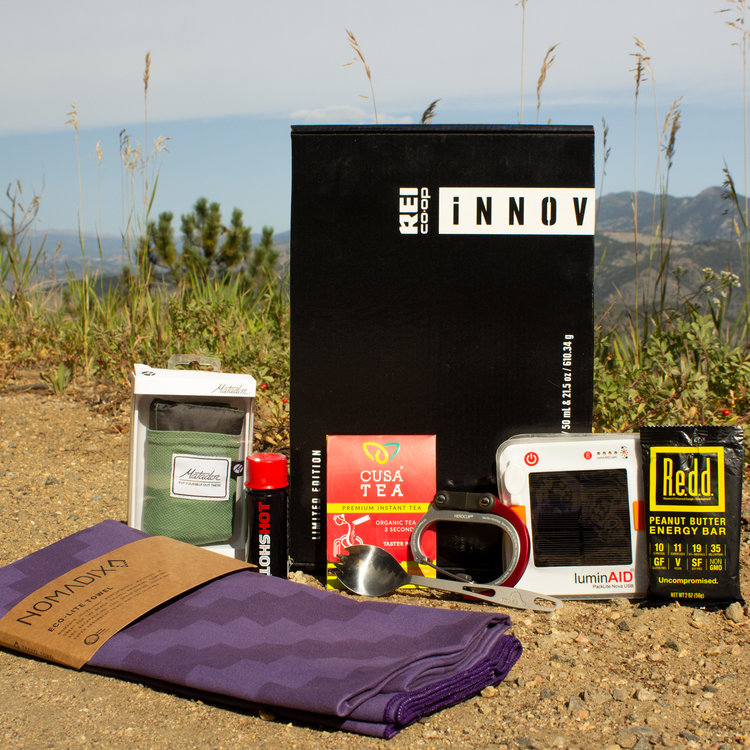
Keep it Green
As we continue to become more conscious of our collective carbon footprint, we are more interested in purchasing products with eco-friendly packaging. By choosing to package your product using biodegradable or reusable materials, you are letting your consumer base know that your company is deeply committed to preserving our environment. You can put your target audience’s mind at ease by using responsibly-sourced materials, such as plant-derived plastics, recycled cardboard, or natural fibers, in your product packaging, so that your consumer base feels good about supporting a company that cares about our planet.
Insta-Worthy Inspiration
We live in a society that loves to share photos of everyday life, and no platform makes it easier than Instagram! Your consumers are constantly on the lookout for “Insta-worthy” photos that will generate buzz on social media. Consider a packaging strategy that absolutely pops in a picture, whether your packaging is luxe, rustic, or just downright quirky. By packaging your product in a highly attractive way that looks amazing on Instagram, filter or no filter, you’re on your way to having it picked up by a brand influencer. This kind of exposure could skyrocket your business overnight!
Stay True to You
When consumers think of your brand and products, what adjective do you want them to use to describe you? The answer to that question can go a long way toward deciding on a strong packaging strategy. It’s important to let your choices be guided by your brand values, not the other way around. For instance, a family-owned company that makes and sells artisanal cheese probably will want their products to evoke imagery of tradition, legacy, and old-fashioned quality, while a company that manufactures high-end cosmetics may opt for ultra-luxe packaging that puts consumers in mind of glamour and celebrity status. No matter what type of product you sell, it is always important to make sure your packaging is in line with the rest of your branding.
Make it Limited
One sure way to generate excitement is to release limited edition products complete with special packaging. Perhaps you want to market goods that are only seasonally available, such as special coffee blends or candle scents, using holiday-themed packaging. Or maybe you have created anniversary-edition packaging to commemorate the number of years your company has been in business. No matter the occasion, a packaging strategy based on a timely or seasonal offering creates a sense of urgency that drives consumers to buy the items you are selling before they run out.

Send a Message
Does your company place value on being an ethical and responsible voice for certain political and social issues faced by members of you target audience faces? A number of companies choose to use their packaging as a platform for sending messages that correspond with the core beliefs of their organization. For instance, if your company is committed to promoting children’s literacy, you may want to use a packaging strategy that incorporates famous quotes from beloved children’s books. Similarly, if you own a business that strongly supports animal rights , you may wish to include messages that echo your commitment to the cause on all of your product packaging. You can use your products to educate your consumer base, which can make a huge impact on our society!
Simplify…and Save!
Sometimes the most effective packaging is none at all! If you are trying to convey a brand image of simplicity, it may be best to employ a minimalist packaging strategy. If, for example, you wish to reduce the wasted space created by standard food item packaging, such as a box or can, perhaps try to use a slimmer, more streamlined container to stand out. Not only does a packaging decision like this help distinguish a particular brand from the rest of the competition, but it also can help a company save money by cutting down on packaging costs. Additionally, a simplified container can add value for consumers who wish to cut down on unnecessary bulk for easier storage and disposal. By keeping it simple and designing product packaging that carries a lower profile than that of your competitors, you’re actually helping it stand out from the rest of the competition!
When choosing the right packaging strategy for your product, keep in mind that, first and foremost, you must choose something that will resonate with your target audience and cause them to select your brand over others on the market. The more you know about your chief consumers, the more you will be able to make informed packaging decisions based on what matters most to them, By sticking to your core brand values and knowing your audience, you can effectively market yourself using distinctive packaging that sets you apart from the crowd!

Looking for a solution? We can help.
Headquarters
9211 Corporate Blvd Ste 110
Rockville MD 20850
Satellite Offices
Dallas, TX
Paris, France
San Francisco, CA
Scottsdale, AZ
info@vivaboxsolutions.com
Phone
800-529-1988
Minimum Order Quantities:
RPET Totes: 3,000
Kraft Shoppers: 5,000
Rigid Boxes: 3,000
Folding Cartons: 5,000
ShopTalk 2019. The 10 Things Impacting Your Business Today & Tomorrow. VBX 2-Min Summary.
consumerexperience
The engaging themes (scientific data point of most attendees and most number of mobile phones aimed at speakers and slides) at Shoptalk Las Vegas this past week were: accelerated change, AI, AR & VR-assisted experiences, influencer marketing, and the role of IRL store associates.
Our summary:
-
Shopping should be fun & social (literally and via mobile).
-
Buying should be easy.
-
Corporate silos need to make way for the pure fluidity of IRL —> Digital that consumers move through on their self-guided journeys to conversion and potentially, loyalty.
-
Caution Inhibits Innovation.
-
Hone a physical retail competency that creates moments worth lingering for.
-
The mobile screen is your new window display.
-
Change the metabolic rate of your company (esp. senior leaders)
-
Make Influencer and digital activations part of the product development process – not so late in the game. We call it the new marketing supply chain.
-
From Erik Nordstrom to Barney’s and Crate & Barrel executives, there was a light shone on the changing role of physical stores and the store associates inside. There was recognition that physical stores are a convenient (or at least can be) place to manage returns and for in-store pickup that puts CX front and center. Recognizing that means looking at the ways associates are trained and incented because this is a critical moment for consumers and can engender real loyalty. Additionally, it means (in our opinion) looking at attribution differently – for example, Nordstrom shared that 50% of their store visits begin online.
-
We’re struck by the efficacy of a high-concept custom box/bag kit to help bridge the shopping & buying divide. Like retailers and brands, we are leaning into smart packaging to make these experiences even more interesting for the consumers and to reveal new first-party data.
Vivabox works with CPG, Beauty, Mass, Specialty, Club, and Drug and in every category, the right trial, education, loyalty, and influencer box respects the privileged role of being in someone’s hands and home. Now that’s a brand experience worth sharing, talking about, and remembering.
Looking for a solution? We can help.
Headquarters
9211 Corporate Blvd Ste 110
Rockville MD 20850
Satellite Offices
Dallas, TX
Paris, France
San Francisco, CA
Scottsdale, AZ
info@vivaboxsolutions.com
Phone
800-529-1988
Minimum Order Quantities:
RPET Totes: 3,000
Kraft Shoppers: 5,000
Rigid Boxes: 3,000
Folding Cartons: 5,000




